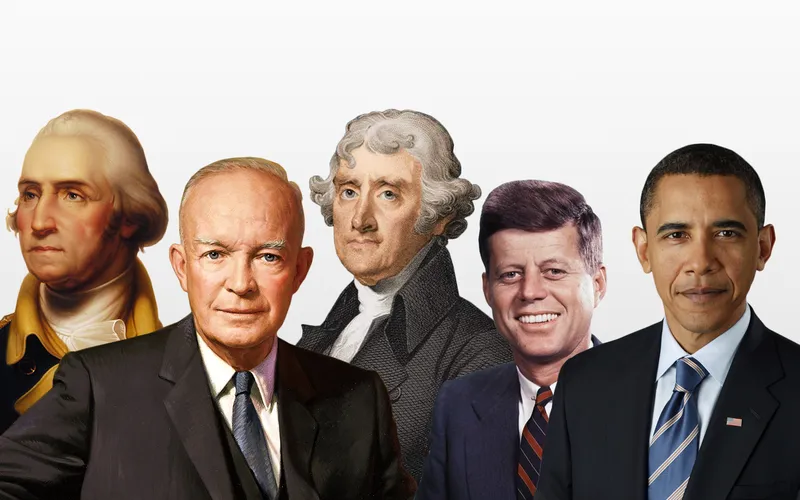

U.S. Presidents With the Best Time Management Habits
Next morning after the Presidents’ Day it’s time to remember top time management insights from the busiest people in this country. They know more about dealing with heavy agenda, handling multiple challenges, and working on a tough deadline than any startup can imagine. However, they find ways to stay efficient and get everything done.
Even with a hectic daily routine, it’s possible to get things done efficiently, and the example of many famous American leaders proves that. So, how to stay productive with enormous workloads, and how to meet the hardest deadlines?

1. George Washington
The first President of the United States, whose birthday eventually turned into Presidents’ Day, was one of the wisest time managers of all time. His workday was planned down to the last minute, and he developed extraordinary punctuality to prevent delays in his plans.
Being punctual is what he demanded from people he worked with: if his secretary was late and blamed his watch for that, Washington said: “Then you must get another watch, or I another secretary”. This approach extended to mealtimes as well – it was not uncommon when a tardy guest arrived and was surprised to discover that the President was halfway done with the meal instead of waiting for the company.
According to the biographers, Washington kept being strict and punctual even after his retirement. He rose with the sun, and started the day according to the plan. Sticking to the schedule and being punctual helped him get more things done, be more productive, and avoid distractions. And that’s the most important time management lesson that we can take: if distractions and unexpected changes create too much uncertainty and jeopardize your plans, create a rigid strict schedule and strictly follow it.
2. Dwight Eisenhower
Facing multiple various tasks throughout the day and handling them all is a challenge – especially when all the tasks seem to be equally critical. Dwight Eisenhower knew this challenge well: while performing his duties as a president, he also commanded the Allied Forces in the World War II. This meant tackling hard tasks and making tough decisions that influenced the lives of other people daily.
He was the person who developed the priority matrix to handle multiple to-dos: the key thing in it is distinguishing the urgent and the important. This approach is called The Eisenhower Method.
Eisenhower used to say: “I have two kinds of problems, the urgent and the important. What is important is seldom urgent, and what is urgent is seldom important.” He created what we call today the Eisenhower Matrix to prioritize tasks:
- Important and urgent
Focus on these tasks and get them done as soon as possible
- Important and not urgent
Schedule time when you’ll be able to handle these tasks
- Urgent and not important
Delegate these tasks to others to get them done sooner
- Not urgent and not important
Don’t do these tasks at all – save your time and energy for more critical ones
Distributing tasks by categories helps a lot – it structures the workday and allows to spend your time more mindfully. Combine task prioritization with using to-do lists and keeping track of how you’re spending your time to become a wiser time manager.
3. Thomas Jefferson
We’re used to think that using technology to manage time better is a recent trend, but the example of Thomas Jefferson shows how helpful technology solutions were in the previous centuries. He was a fan of automation and structure, and used ingenious devices of those times to free himself from repetitive actions and keeping everything in his memory. “The palace of gadget geekery” is how Wired called his house.
Jefferson, realizing how important it is to keep duplicates of all information he worked with, used a polygraph to create copies of his letters as he wrote them. This saved his and his secretary’s time necessary for manually copying the writings.
For taking notes, he used a tine fanned tablet which was reusable – later he transcribed the notes, erased those that he didn’t need any longer, and used the cards again. This device was included in his travel kit, being convenient to keep and use on the go.
An avid reader, Jefferson handled a lot of information and needed solutions to avoid losing it and having to search it again. Having to work with several books at a time and reference them in his writing, Jefferson built a custom desk that allowed him to work with five books simultaneously. Another invention to save time and avoid losing information – an ancient version of tabbed browsing.
4. John Kennedy
Staying productive is often exhausting, and we all tend to find excuses for not being consistent enough. In this regard, we all have to learn the lesson from JFK, who maintained high performance despite of severe health problems. Being not able to afford any excuses, he found ways to maintain high productivity.
The first rule to keep performance levels up and handle stress was taking a 1-2 hour nap every day. In that time, no calls were allowed, no folders sent up, and no one was allowed to go upstairs and interrupt the sleep for any reason. This helped Kennedy adapt for longer workdays and relieve stress.
Another rule was incorporating exercise sessions in daily routine. This healthy habit was not only important for handling health issues, but also helped switch off and disconnect from work.
5. Barack Obama
Barack Obama is famous by his efficient time management solutions that help him save energy and get things done sooner. And the habit to wake up early is one of the foundations of a productive day: despite of calling himself a night owl, Obama finds it indispensable to get an early start and start working in the morning.
What helps here is a morning routine that gives a good start for the rest of the day, and pre-planned schedule. Planning days in advance is another productivity habit of Barack Obama: knowing what needs to be accomplished already before the day starts is essential for staying productive.
Obama uses his famous approach to decision making. As we all know, making decisions drains emotional energy and leads to fatigue and burnout. Obama reduces the number of unimportant decisions to save energy for important ones: he has a limited wardrobe and a preset menu of daily meals. It prevents him from wasting willpower on trivial things – and focus on what really matters.
Summary
Being a wise time manager is an art. Mastering it means breaking old habits and developing new ones, becoming mindful about your activities, and adopting time-saving approaches and techniques in your daily routine. Learn from the top performers, try their methods to save time and energy, and keep track of where your time goes. And – enjoy your high performance.





